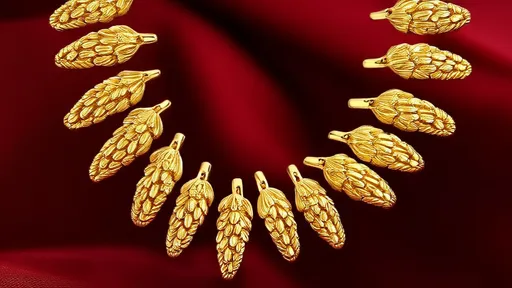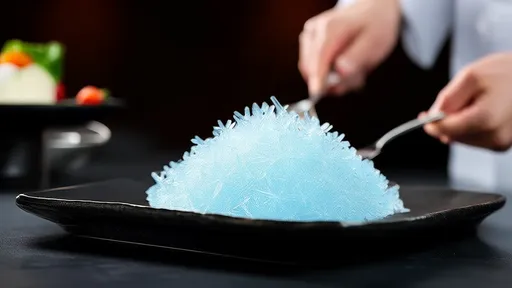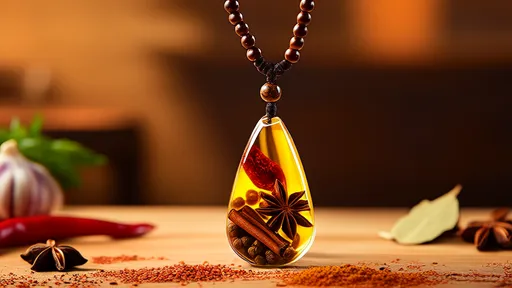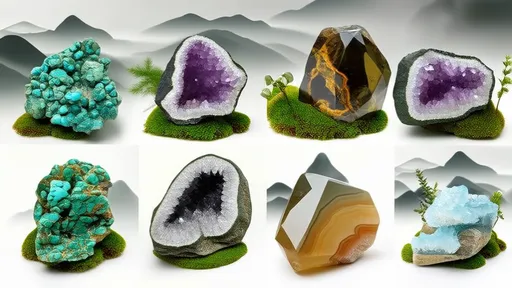The aging process of Pu-erh tea has long fascinated connoisseurs and scientists alike. Unlike other teas, Pu-erh undergoes a unique microbial fermentation that transforms its flavor, aroma, and chemical composition over time. One of the most intriguing aspects of this transformation is the formation of crystalline structures within the tea leaves, a phenomenon known as "tea crystal symbiosis." These crystals, often visible under magnification, serve as a natural record of the tea’s maturation, offering clues about its storage conditions, microbial activity, and even its potential quality.
The Science Behind Tea Crystals
Pu-erh tea’s aging process is driven by a combination of microbial activity, oxidation, and enzymatic reactions. As the tea leaves ferment, certain compounds—particularly polyphenols, catechins, and organic acids—begin to crystallize. These crystals are not uniform; their size, shape, and distribution vary depending on factors like humidity, temperature, and the tea’s initial composition. Researchers have identified several types of crystals, including theine, calcium oxalate, and other organic complexes, each forming under specific conditions. The presence of these crystals is often a sign of well-aged Pu-erh, as they indicate a slow, controlled fermentation process.
A Microscopic Timeline
Under a microscope, the crystals tell a story. Younger Pu-erh teas, which have undergone minimal fermentation, show sparse or no crystallization. In contrast, teas aged for decades often exhibit dense, well-defined crystal networks. These structures are not static; they evolve as the tea continues to ferment. For example, in teas stored in humid environments, crystals tend to form more rapidly but may be smaller and less stable. Dry storage, on the other hand, slows crystallization but often results in larger, more robust formations. This dynamic interplay between environment and chemistry makes each batch of aged Pu-erh unique.
The Role of Microbes
Microbial activity is the invisible hand guiding crystal formation. The fungi and bacteria present in Pu-erh tea—such as Aspergillus and Penicillium species—break down complex organic molecules into simpler compounds, some of which eventually crystallize. These microbes thrive in specific conditions, and their metabolic byproducts directly influence the type and quantity of crystals that form. For instance, teas stored in traditional earthenware or bamboo husks often develop distinct crystal patterns due to the unique microbial communities fostered by these materials. This microbial diversity is why Pu-erh from different regions or storage methods can exhibit strikingly different crystalline profiles.
Crystals as Quality Indicators
For collectors and experts, tea crystals are more than just a curiosity—they’re a marker of quality. Well-formed crystals are often associated with a smoother, more complex flavor profile, as they indicate a gradual and balanced fermentation process. However, not all crystals are desirable. Poor storage conditions can lead to erratic or excessive crystallization, which may correlate with off-flavors or uneven aging. Some experts even use crystal patterns to authenticate vintage Pu-erh, as counterfeit or artificially aged teas rarely replicate the natural crystallization found in genuinely old specimens.
The Art of Preservation
Preserving Pu-erh’s crystalline record requires careful attention to storage. Temperature fluctuations, excessive moisture, or exposure to strong odors can disrupt crystal formation and alter the tea’s aging trajectory. Traditional methods, such as storing tea in clay jars or wooden boxes, are still favored by many for their ability to maintain stable conditions. Modern techniques, including climate-controlled environments, offer precision but may lack the subtle microbial interactions that contribute to traditional aging. Regardless of the method, the goal remains the same: to allow the tea to mature naturally, with its crystals serving as a testament to time and care.
Future Research and Applications
The study of tea crystals is still in its early stages, but it holds promise for both science and industry. Researchers are exploring how crystal analysis could be used to standardize Pu-erh aging or detect adulteration. Meanwhile, tea producers are experimenting with controlled fermentation techniques to enhance crystallization and improve flavor. As our understanding of this phenomenon grows, so too does the appreciation for Pu-erh’s intricate aging process—a process beautifully documented in the silent, shimmering language of crystals.

By /Jul 15, 2025

By /Jul 15, 2025

By /Jul 15, 2025

By /Jul 15, 2025

By /Jul 15, 2025

By /Jul 15, 2025

By /Jul 15, 2025

By /Jul 15, 2025

By /Jul 15, 2025

By /Jul 15, 2025

By /Jul 15, 2025

By /Jul 15, 2025

By /Jul 15, 2025

By /Jul 15, 2025

By /Jul 15, 2025

By /Jul 15, 2025

By /Jul 15, 2025

By /Jul 15, 2025